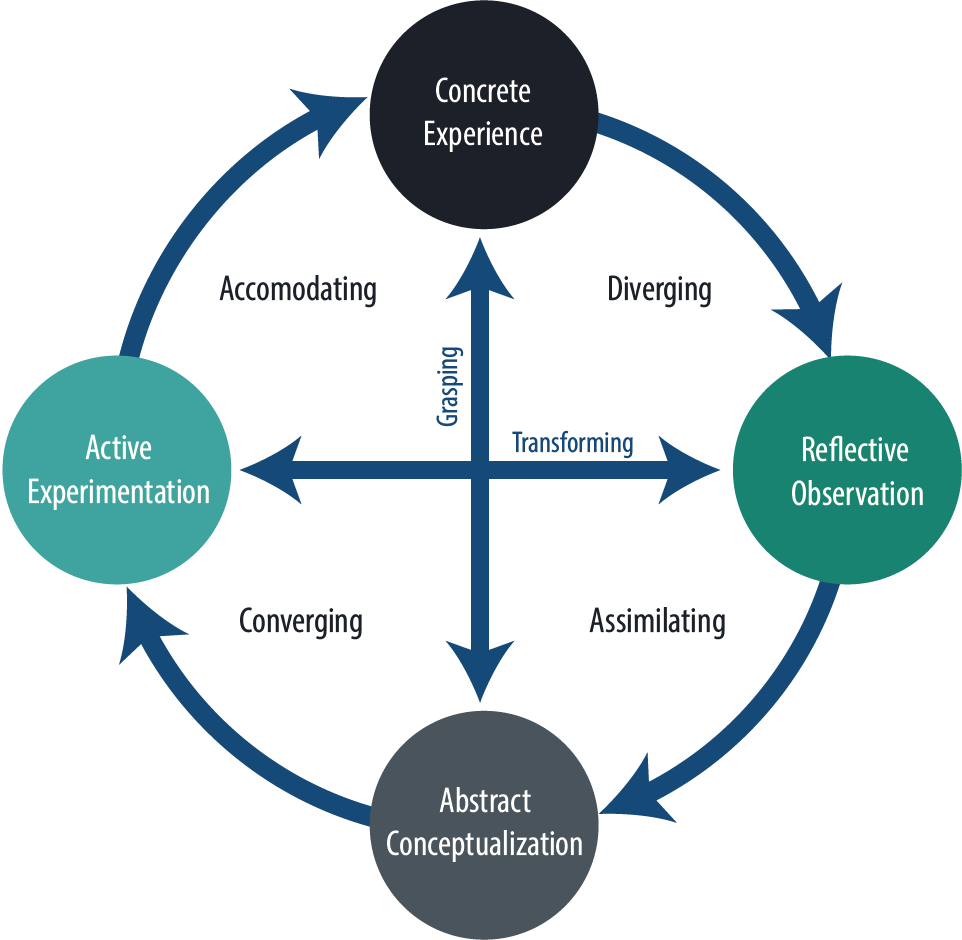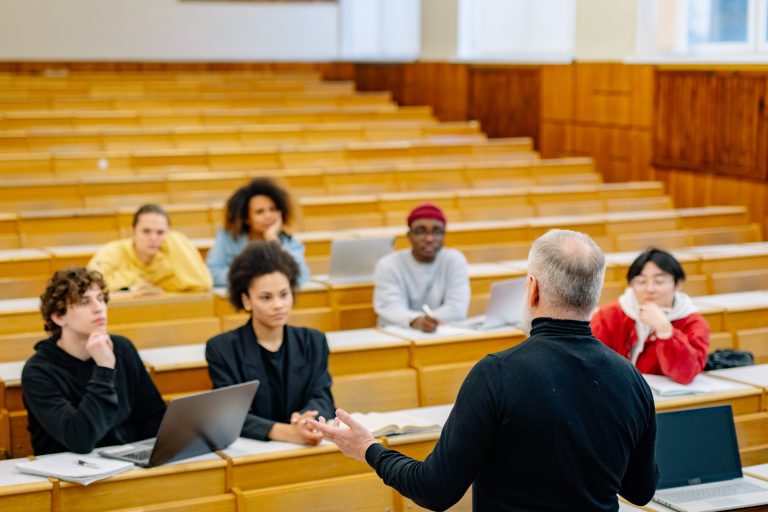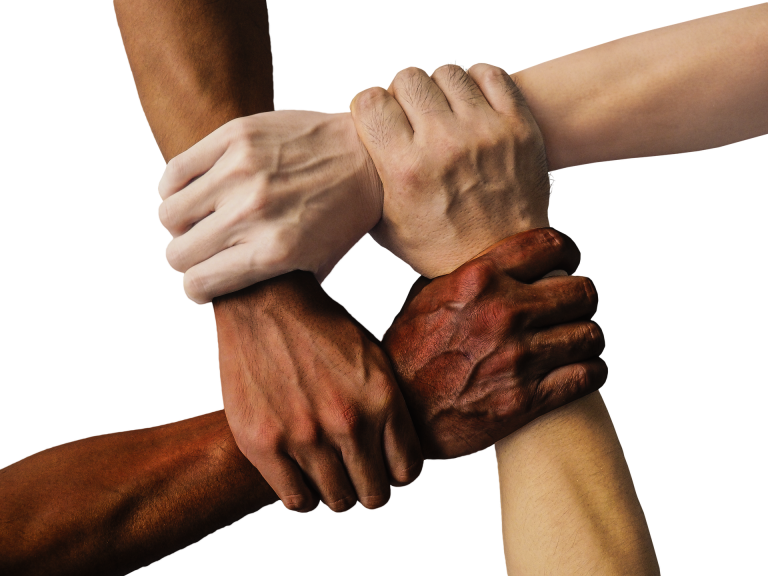Balancing the Four Learning Styles of Experiential Learning
This is the third in a series about experiential learning; for more information check out Part 1—The Six Propositions of Experiential Learning and Part 2—Experiential Learning: The Learning Cycle.
Experience, reflect, think, and act. These were the four steps of the experiential learning cycle mentioned in Part 2 through which students can increase their depth of understanding and skill. However, while the cycle as a whole is a fundamental aspect of the experiential learning process most students will not thrive in every step of the cycle, as is perhaps expected. Rather, they will find themselves most comfortable and adept at specific stages throughout the cycle. The stages where a student is most comfortable are reflective of a student’s learning style.
The Four Learning Styles
For the purposes of this discussion, the four steps mentioned above will be referred to as concrete experience, reflective observation, abstract conceptualization, and active experimentation. With that in mind, it is in the overlap between steps that experiential learning has identified four learning styles: Diverging, Assimilating, Converging, and Accommodating.

Diverging
The diverging learning style, also known as feel and watch, balances concrete experience and reflective observation. Learners with this style tend to perform better in situations that require idea generation, such as brainstorming. They tend to be imaginative and specialize in the arts. Divergers learn best through hands-on activities, group work, and conventional lectures. They operate best when they are able to take in various perspectives as they form their own.
Assimilating
The assimilating learning style, also known as think and watch, balances reflective observation and abstract conceptualization. Learners with this learning style emphasize reasoning. These learners prefer to review the facts and assess the concrete experience. Assimilators prefer independent exercises, classic lectures supported by video presentation, readings, and tutorial-led exploration. They operate best when they have time to think and analyze the information.
Converging
The converging learning style, also known as think and do, balances abstract conceptualization and active experimentation. These learners approach learning from a problem-solving lens and prefer to find technical solutions. Convergers prefer worksheets, computer-based tasks, and interactive activities where problem-solving is required. They operate best when they are applying theories to real-world problems and practical solutions.
Accommodating
The accommodating learning style, also known as feel and do, balances active experimentation and concrete experience. These learners tend to be adaptable and follow their “gut” rather than resorting to logic. Accomodators prefer engaging in hands-on activities, “what if” and “why not” questions, and independent discovery. They operate best when they are actively doing things and have the opportunity to follow their own initiative in progressing through an experience.
Teaching All Styles
Generally, instructors will be able to identify students’ preferred learning styles through simple observation, which will help instructors tailor their courses as needed and prepare instructors to help individual students as needed.
Of course, a single class is unlikely to be made up of learners who all have the same learning style. How, as an instructor, do you properly balance giving each student an education experience needed to be successful?
When teaching, make sure to use a variety of learning experiences in order to reach all learning preferences. Not only will all students be catered to, but it will expose students to their non-preferential learning styles. Though you may need to identify and give extra assistance to outliers, this broad exposure will help students to become more adaptable and versatile—which will only help them in the future!
But what about online learning? While it can be far more difficult to provide experiential learning while on an online platform, it is still possible. Consider the benefits of activities that are project-based, case-based, problem-based, and inquiry-based; these are all learner-centered activities that encourage students to consider real-world context while maintaining the opportunity for reflection. Other options include gamification, social learning, and collaborative discussions, balanced with readings, discussion boards, lecture videos, and other classic educational tools.
Just as there is no one way to learn, there is no one way to teach. As an instructor, both you and your students can be greatly benefited by using a variety of teaching styles.
Sources
“Experiential Learning in Online Courses.” UWM Center for Excellence in Teaching and Learning. Accessed October 28, 2022. https://uwm.edu/cetl/experiential-learning-in-online-courses/.
“Kolb’s Four Stages of Learning.” Center for Instructional Technology and Training. Accessed October 28, 2022. https://citt.ufl.edu/resources/the-learning-process/types-of-learners/kolbs-four-stages-of-learning/.
Kurt, Serhat. “Kolb’s Experiential Learning Theory & Learning Styles.” Educational Technology, September 25, 2022. https://educationaltechnology.net/kolbs-experiential-learning-theory-learning-styles/.
Mcleod, Saul. “Kolb’s Learning Styles and Experiential Learning Cycle.” Simply Psychology. Accessed October 28, 2022. https://www.simplypsychology.org/learning-kolb.html.
Virtanen, Aurora. “What Is Kolb’s Experiential Learning Theory?” Growth Engineering, April 25, 2022. https://www.growthengineering.co.uk/kolb-experiential-learning-theory/.






